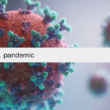
In a world where chronic diseases like cardiovascular diseases and diabetes are on the rise, the power of foods in disease prevention is more crucial than ever. This guide explores how specific foods, backed by dietary guidelines and scientific research, can play a pivotal role in maintaining health and preventing diseases. Also, examples of foods for disease prevention are given below.
The Role of Foods in Health and Prevention
The link between diet and health is undeniable. Eating a diet rich in vegetables, fruits, whole grains, and lean proteins can help in the prevention of a myriad of diseases. It’s not just about what we eat but also how we eat, emphasizing healthy eating habits.
Vegetables and Fruits: Nature’s Disease Fighters
The Power of Phytonutrients
Vegetables and fruits are loaded with phytonutrients, natural compounds that are essential for health and disease prevention. They are known to control inflammation and reduce the risk of chronic diseases.
Examples and Benefits
- Leafy Greens: Rich in vitamins and minerals, they help in controlling blood pressure and reducing heart disease risk.
- Berries: Packed with antioxidants, they play a role in preventing cancer and maintaining brain health.
Whole Grains and Heart Health
Unrefined Goodness
Whole grains, unlike their refined counterparts, retain all the essential parts of the grain. This makes them a powerhouse of nutrition.
Whole Grains and Cardiovascular Health
Eating whole grains can improve heart health by lowering cholesterol levels and reducing the risk of heart disease.
Proteins and Chronic Disease Prevention
Lean Proteins: A Healthy Choice
Lean proteins, including fish, poultry, and plant-based options, are essential for muscle maintenance and overall health.
Fish: The Omega-3 Powerhouse
Fatty fish like salmon are high in omega-3 fatty acids, and known for their role in reducing the risk of cardiovascular diseases.
The Role of Physical Activity
A Synergistic Approach
While diet plays a crucial role in disease prevention, it’s important to couple it with regular physical activity. This combination is key to controlling weight and preventing conditions like heart disease and diabetes.
Dietary Guidelines for Prevention
Adopting a Balanced Diet
Adhering to dietary guidelines is crucial. A balanced diet that includes a variety of foods is recommended for disease prevention.
Key Guidelines
- Diversity: Incorporate different foods from all food groups.
- Moderation: Control portion sizes and reduce intake of processed foods.
Managing Specific Conditions
Diabetes Control
Diet plays a significant role in managing diabetes. Foods with a low glycemic index, like whole grains and leafy greens, help in controlling blood sugar levels.
Cardiovascular Disease Prevention
A diet low in saturated fats and high in whole grains, fruits, and vegetables is recommended to prevent cardiovascular diseases.
Food Safety: Preventing Food Poisoning
The Role of the Food and Drug Administration
The Food and Drug Administration (FDA) sets guidelines for food safety to prevent foodborne illnesses. Following these guidelines is crucial for overall health.
Key Practices
- Hygiene: Proper handling and preparation of foods.
- Awareness: Being aware of food recalls and safety alerts.
Public Health and Nutrition
The Importance of Public Health Initiatives
Public health initiatives play a vital role in educating the public about healthy eating habits and chronic disease prevention.
Community Programs
Programs that promote physical activity and healthy eating can make a significant difference in community health.
Frequently Asked Questions
What foods are good for fighting illness?
Consuming vitamin C-rich fruits and vegetables is a wise choice. Your body uses vitamin C to strengthen its immune system, which helps it fend off infections. The BRAT diet—bananas, rice, apples, and toast—might be your best option if you're feeling queasy.
What is food as medicine for chronic diseases?
Food is Medicine (FIM) is a growing movement that helps patients obtain healthier food through a range of initiatives, such as produce prescriptions, food subsidies, and prepared meals. The goal is to help treat or prevent chronic conditions.
How to eat healthy?
Raise Your Fiber.
Up your calcium and vitamin D intake.
Increase the Potassium.
Limit sugar additions.
Take Saturated Fats' Place.
Reducing sodium intake.
Conclusion
Incorporating a diet rich in vegetables, fruits, whole grains, and lean proteins, coupled with physical activity, is key in preventing diseases and maintaining health. By following dietary guidelines and being aware of food safety, we can take control of our health and reduce the risk of chronic diseases. Remember, prevention is always better than cure, and the food we eat plays a crucial role in this journey towards a healthier life.



